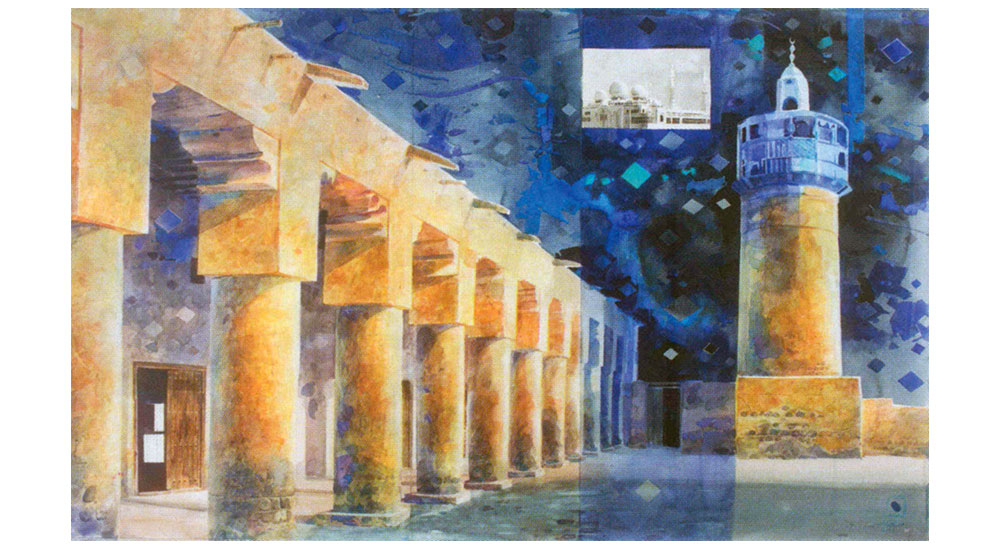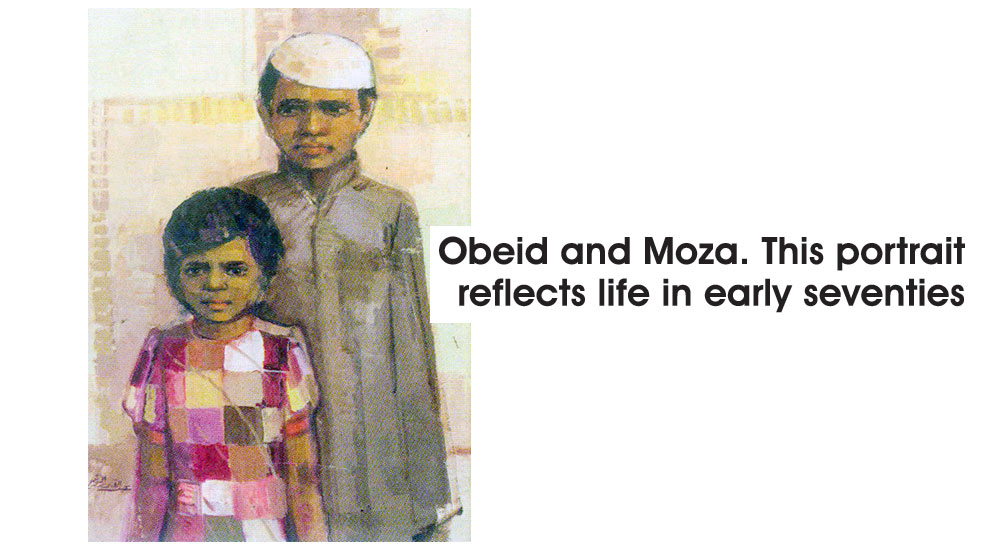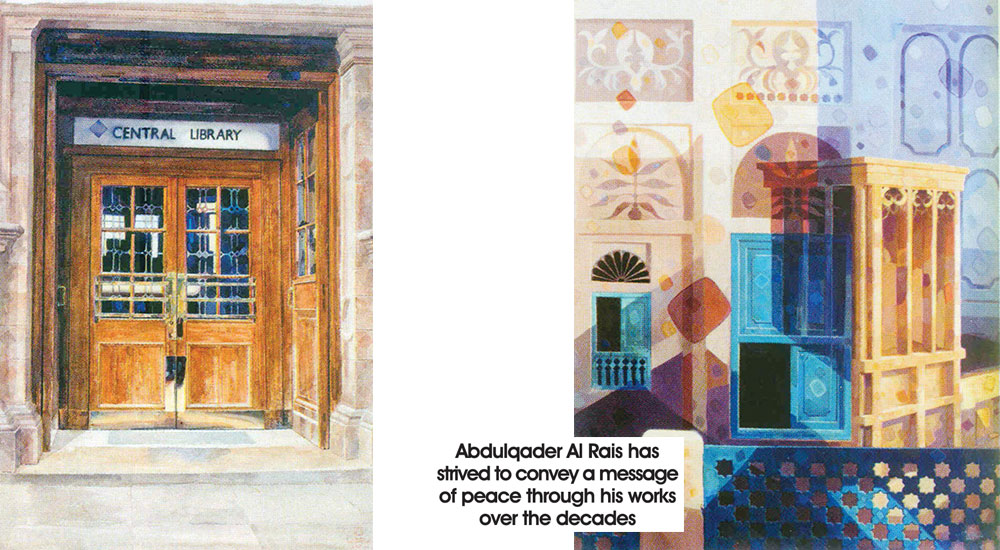ZULFIQAR ALI ZULFI’S HUES OF DUSK
- 29 Oct - 04 Nov, 2022
Al Rais is just back from Paris where Dubai Culture inaugurated his first department international retrospective at the Institut du Monde Arabe (Arab World institute) from September 25 to October 21. The exhibition displayed more than 50 of his artworks from the 1960s until today, covering various periods of his career, from his early years in Kuwait to his current life in Dubai, reflecting the pivotal role he has played in enriching the UAE’s cultural landscape.

“It’s been a good show and I am happy that I was able to showcase the beauty of my country and open the dialogue for cultural exchange,” says Al Rais. “It’s very important in these troubled times.”
One of the greatest pioneers of contemporary art in the UAE, Al Rais’ work is found locally at the Cultural Foundation in Abu Dhabi and the Sharjah Art Museum, in addition to the beautiful murals at Etihad Museum and the Rashid Hall in Dubai Airport and the Dubai Metro. He is one of the five artists commissioned to produce a work of art on a train as part of the efforts of the Dubai government to encourage public art in Dubai.
Internationally his work is hugely recognised and finds place at the British Museum, the Louvre in Paris, Northwest Museum of Culture and Arts in Washington, Museum of Contemporary Art in Shanghai, Museum of Modern Art in New Delhi and the Jordan National Museum of Fine Arts. His work has also been displayed at the European headquarters of the United Nations in Geneva.

A self-taught artist, Al Rais’ primary influences were largely the Dutch Masters and French impressionists. Born in Dubai, he was sent to Kuwait when he was only 9.
In 1965 the young Al Rais met a prominent Iraqi artist a summer camp for students who took a fancy for his work. “He took me to Al Marsam Al Hurr or the free studio, and it was here that I met other artists of the Gulf modern art movement and explored the works of the big mashers such as Raphael and Rembrandt. They had a huge influence on me.”
During this time, the Israel-Palestine war of 1967, had a huge impact on Al Rais. It shaped his political ideology and strengthened his voice of protest through his art. The war left thousands homeless. Al Rais depicted this feeling in two of his most important works: Refugees and Al Intithar (The Wait) in 1968.
The latter is an oil-on-board and has three Palestinian boys as its subject matter. The boys, with downcast eyes and slumped stances, done in muted colours, drive home the poignancy of the situation, which still holds true. The painting has not survived well in the desert climate and there are clear signs of damage that partially conceal one of the faces of the three boys. But it does well to document the artist’s political protest, as does The Refugees.
Al Rais says, “I think I could document that feeling of alienation well in The Refugees because I too was living away from my country, feeling quite lonely. Without this feeling I couldn’t have painted this.”
In 1971, another of his paintings, Amal, expressed his hope for a more peaceful world and a better life for all Palestinians, while in 1973 his work Obeid and Moza was about a boy and a girl in his neighbourhood in the Al Fahidi district of Dubai. These paintings from the 60s and 70s are particularly precious as they represent a body of work from Al Rais that no longer exist.

Back in Dubai after completing high school in Kuwait in 1973, Al Rais enrolled in college in Al Ain and had his first solo exhibition at the Al Ras Public Library in 1974 when he was 23. His works reflected his love for landscapes and traditional Emirati architecture, the coastlines and dhows going out to sea, and even a series of self-portraits. But soon he hit a block and stopped painting for 12 years.
“I don’t know what happened. I just stopped painting. It was only much later when I visited the US in 1986 that I picked up my paintbrush again. I was driving around and the landscape there made me crazy. I came back and started using a lot of watercolours. I was painting with a passion, even while working at the Ministry of Labour as a labour inspector. In 1987 I had my second solo exhibition.”
Throughout the eighties, nineties and much later as well, Al Rais has commented on the disturbed situation in the Arab world, be it the first Gulf War, the civil war in Lebanon, Palestinian refugee camps, the condition in Tunisia, Syria, Libya, and Yemen.
For Al Rais – who also created a special painting for the Paris retrospective titled An Eternal Spring – his art highlights the rich Arab culture and UAE’s creative art scene. “I hope it will be an opportunity for visitors to discover the unity, tolerance and multiculturalism of this beautiful country.”
– Source: Friday magazine
COMMENTS